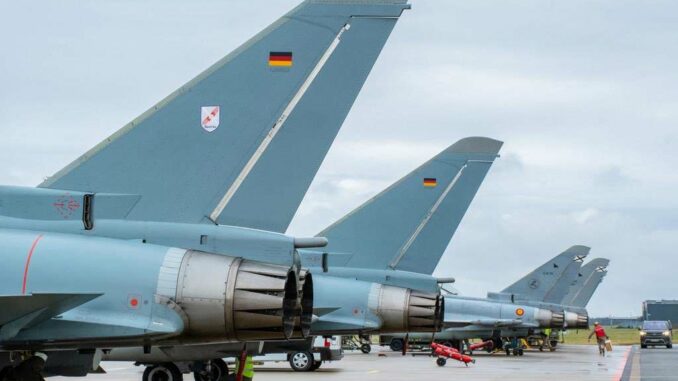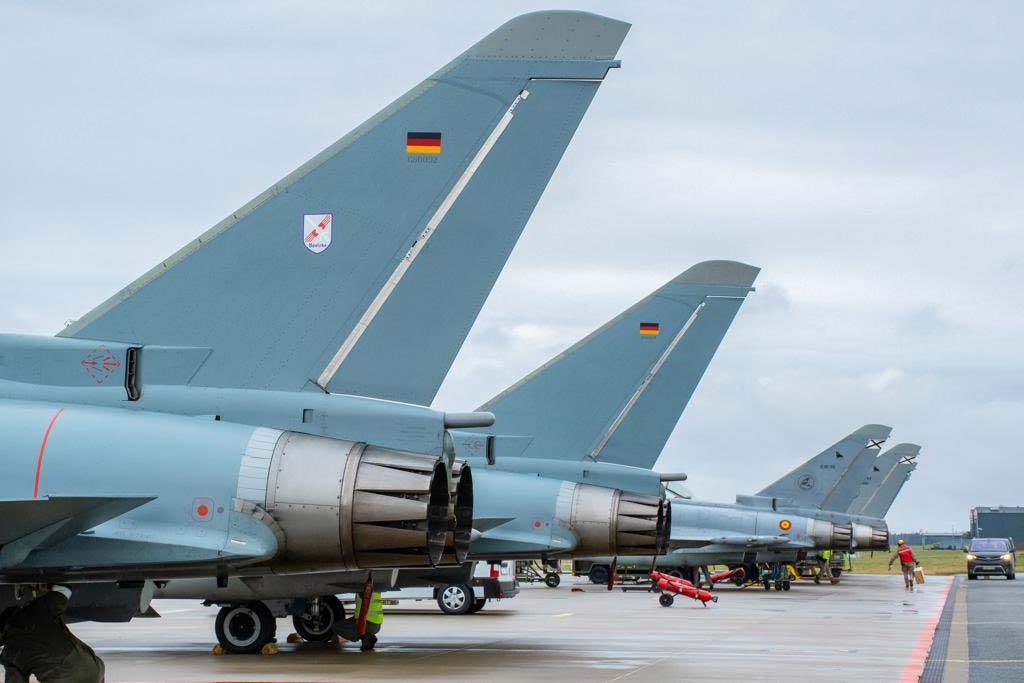
Germany is exploring the use of Eurofighter Typhoons from civilian airports to defend its cities, a strategy reflecting a growing global trend. This approach, responding to modern threats, raises important strategic and logistical questions.
The German Luftwaffe’s recent initiative to use Eurofighter Typhoons from civilian airports marks an important step in its urban defense strategy. This maneuver, set against a global backdrop of heightened military tensions, requires an in-depth analysis of its implications, challenges and historical precedents.
The Luftwaffe and Eurofighter Typhoons:
The Luftwaffe recently announced its intention to deploy Eurofighter Typhoons at Hannover airport for the “Hannover Shield” exercise. The aim of this deployment is to reinforce the defense of German cities against airborne threats such as drones and cruise missiles. Rapid reaction capability is a key component of this strategy.
This deployment requires significant adaptation of civilian infrastructures, including power, electronics and personnel accommodation. Coordination with ground services, fire departments and air traffic control is also crucial.
Hannover airport was chosen for its ability to operate continuously and for its operational flexibility. Although the exercise takes place during daylight hours, it symbolizes 24/7 air defense capability.
Global context:
Other countries, such as Japan, are adopting similar strategies in the face of regional threats. Military airbases, potential targets in times of conflict, are prompting air forces to consider civilian airports as viable alternatives.
The use of civilian airports for military operations is not new. During the Second World War and the Cold War, airports such as LAX and MIA were used for military purposes.
Experts point out that civilian airports used for military purposes could become legitimate targets in the event of conflict, as demonstrated by the example of Israel’s attack on Damascus airport in Syria.

Technological and strategic challenges:
The rise of China and Russia in terms of long-range missiles poses a major challenge to air defense systems. Flexibility and speed of deployment become crucial in this context.
The conflict in Ukraine illustrates the importance of airspace control, even in the presence of a numerically superior air force.
The use of civilian airports by the Luftwaffe and other air forces raises questions about civil security, logistics and international law. It requires careful planning to avoid interference with civilian operations, and to ensure an effective response in the event of a crisis.
The coexistence of military and civilian operations in the same space calls for rigorous safety protocols to protect civilians and personnel.
The use of civilian infrastructures for military purposes raises questions about their status as potential targets and the ethical implications of such strategies.
The Luftwaffe’s initiative to use Eurofighter Typhoons from civilian airports is a significant strategic development. While offering a flexible response to contemporary threats, this strategy raises complex questions of logistics, security and international law. How Germany and other nations navigate these uncharted waters will define the future of urban air defense and the coexistence of the civilian and military spheres.
War Wings Daily is an independant magazine.